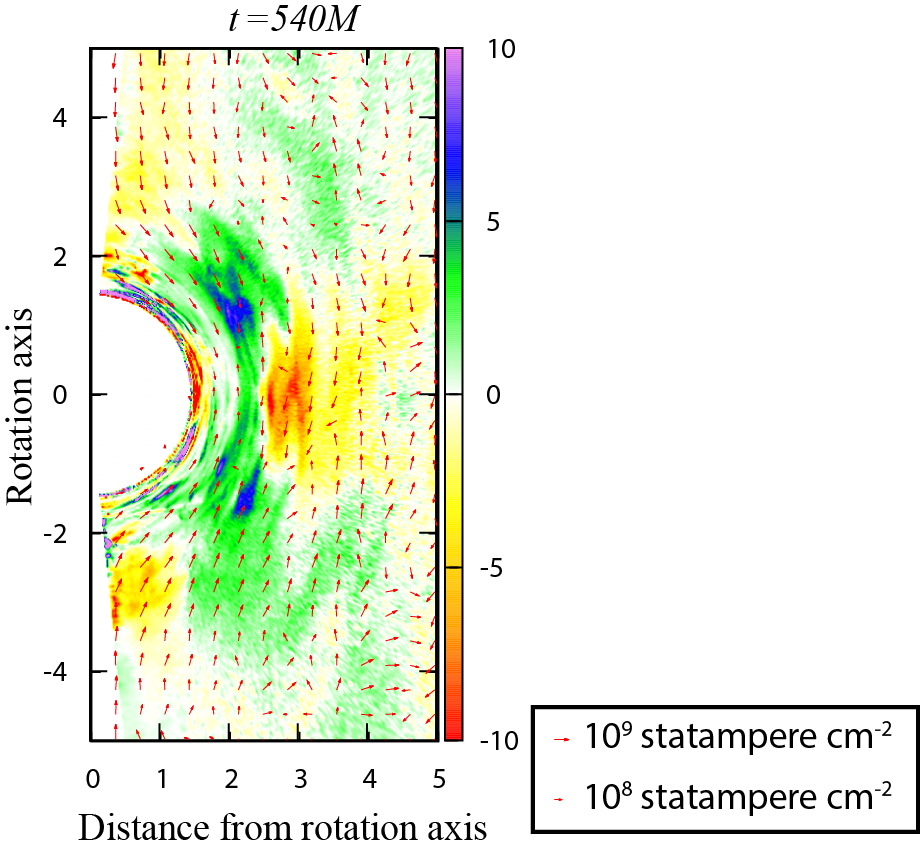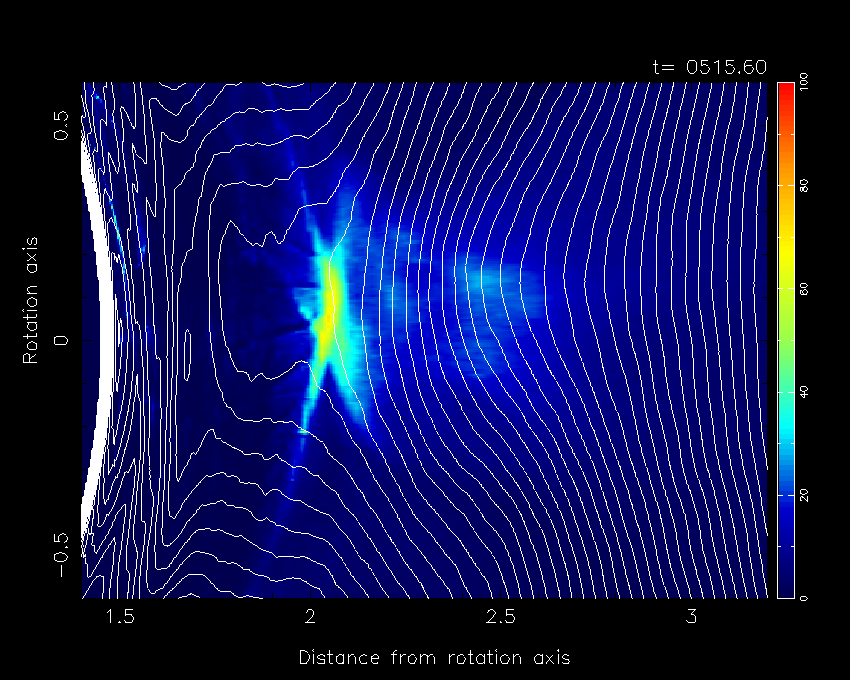BIWA
A Particle-in-Cell code for general-relativistic plasmas
BIWA is a modern Fortran code developed by the CompAS group for particle-in-cell simulations of relativistic plasmas around low-accreting black holes.
It employs a general relativistic particle-in-cell (GR-PIC) scheme to solve the evolution of electron and positron distribution functions and electromagnetic fields near Kerr black holes.
The code solves particle motion in 3D and electromagnetic fields in 2D using non-uniform grids in Boyer-Lindquist or Kerr-Schild coordinates.
It includes particle creation via photon-photon collisions and incorporates GR effects through Christoffel symbols and covariant derivatives. BIWA is applied to stellar-mass black holes with heavy electron mass to resolve plasma scales. The code is applied to astrophysical black holes, assuming that the results also hold for supermassive black holes.
- Solves particle geodesic equations with source terms to update position and momentum of macro particles
- Implements pair creation rate at each position considering photon-photon collisions
- Incorporates GR effects in both particle equations of motion and in Maxwell equations.
- Solves time-dependent Maxwell equations (Ampere's and Faraday's laws) in each time step
- Constructs electric currents by summing contributions of individual macro electrons and positrons in Ampere's law
- Imposes time-independent Maxwell equations (Gauss's law and solenoidal law) only at the initial time step
- Simulated a 10 solar mass, rapidly rotating black hole with dimensionless Kerr spin parameter a=0.9 and accretion rate dm/dt=0.00025 (in Eddington unit)
- Showed strong particle acceleration in the ergosphere, where the black hole's rotational energy is stored
- Revealed charge density deviations from Goldreich-Julian values, consistent with the presence of acceleration electric fields
- Demonstrated electric currents flowing inwards (higher latitudes) and outwards (lower latitudes), as expected for a rotating conducting body in a magnetic field
- Exhibited intermittent, flaring energy extraction activity from a rotating black hole
- Demonstrated that the extracted energy flux concentrates in the middle latitudes
- Explained limb-brightened jet observed from Mrk 501, M87, 3C84, and Cyg A



